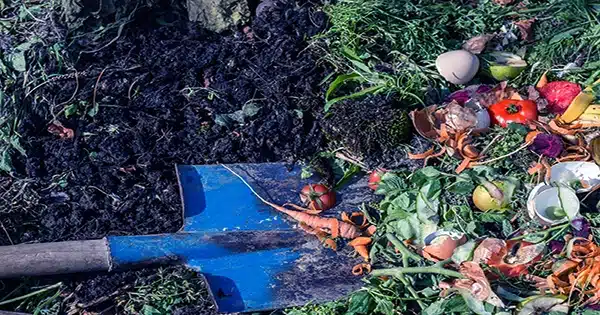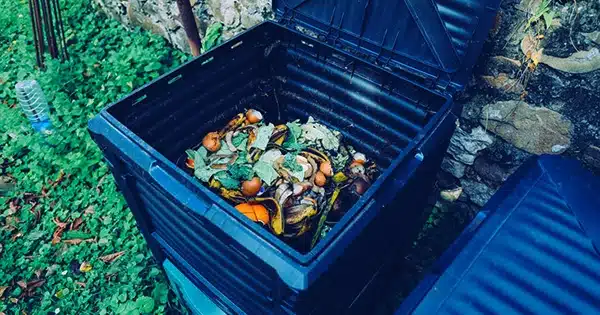Plastics are used in practically every aspect of our life. These materials are inexpensive to produce and extremely stable. The issue arises when we stop using anything plastic—it might remain in the environment for years. Plastic will degrade over time into smaller particles known as microplastics, which can pose substantial environmental and health risks.
The ideal approach would be to utilize biodegradable plastics instead, however many of these bioplastics are not designed to decompose under backyard composting conditions. They must be composted in commercial composting facilities, which are not available in all parts of the country.
New bioplastics have been created by a team headed by scientists at the University of Washington that break down in a backyard compost bin on the same timetable as a banana peel. These bioplastics, often known as spirulina, are manufactured entirely from powdered blue-green cyanobacteria cells. The scientists employed the same manufacturing method used to make traditional plastics to mold the spirulina powder into a variety of shapes. The bioplastics developed by the UW team are comparable to single-use, petroleum-based polymers in terms of their mechanical characteristics.

The findings were reported in Advanced Functional Materials on June 20.
“We were motivated to create bioplastics that are both bio-derived and biodegradable in our backyards, while also being processable, scalable, and recyclable,” said senior author Eleftheria Roumeli, an assistant professor of materials science and engineering at the University of Washington.
“The bioplastics we created using only spirulina not only have a degradation profile similar to organic waste, but they are also 10 times stronger and stiffer on average than previously reported spirulina bioplastics.” These qualities offer up new avenues for the practical application of spirulina-based plastics in a variety of industries, including disposable food packaging and home plastics like bottles and trays.”
For a number of reasons, the researchers decided to employ spirulina to create their bioplastics. It can be grown on a huge scale because people currently utilize it to make a variety of foods and cosmetics. Spirulina cells also absorb carbon dioxide as they develop, making this biomass a carbon-neutral or even carbon-negative source of energy for the production of polymers.
“Spirulina also has unique fire-resistant properties,” said lead author Hareesh Iyer, a doctorate student in materials science and engineering at the University of Washington.
“When exposed to fire, it self-extinguishes instantly, unlike many traditional plastics, which either combust or melt.” Because of their fire resistance, spirulina-based polymers are useful in areas where regular plastics may not be viable because of their flammability. Plastic racks in data centers are one example since the technologies required to keep the servers cool can grow very hot.”
Plastic goods are frequently created by a process that uses heat and pressure to mould the plastic into the required shape. With their bioplastics, the UW team followed a similar strategy.
This means that if we were to use our materials on an industrial scale, we wouldn’t have to completely rethink our manufacturing processes, said Roumeli. “We have eliminated a typical impediment to scaling up from the lab to meet industrial needs. For instance, a lot of bioplastics are created by extracting molecules from biomass, like seaweed, and combining them with performance enhancers before casting them into films. This method cannot be scaled up because it calls for materials to be in a solution before casting.
Other researchers have utilized spirulina to make bioplastics, but the bioplastics developed by the UW researchers are much stronger and stiffer than prior attempts. The UW team adjusted the microstructure and bonding within these bioplastics by changing the processing parameters (such as temperature, pressure, and duration in the extruder or hot-press) and examining the structural attributes of the resulting materials, such as strength, stiffness, and toughness.
These bioplastics have not yet been scaled up for industrial use. While these materials are robust, they are also quite fragile. Another issue is that they are water sensitive.
“You wouldn’t want these materials to get rained on,” Iyer explained.
The team is working to resolve these problems and is still researching the fundamental ideas that govern how these materials behave. With a variety of bioplastics, the researchers may create various scenarios. This would be comparable to the various present polymers made from petroleum.
The recently created materials can also be recycled.
Biodegradation is not the ideal end-of-life situation, according to Roumeli. Our spirulina bioplastics can be recycled mechanically, which is a simple process. However, people rarely recycle plastics, therefore the fact that our bioplastics break down swiftly in the environment is an extra benefit.













